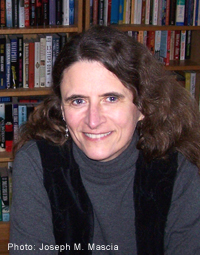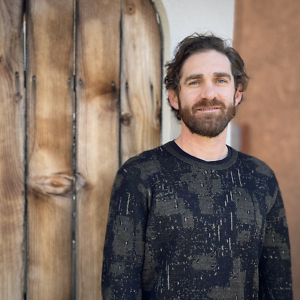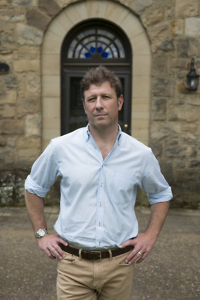Diving In
Sara J. Henry’s protagonist rescues a drowning child—and finds herself in a world of mystery
“If I had blinked I would have missed it. But I didn’t, and I saw something fall from the rear deck of the opposite ferry: a small, wide-eyed human face, in one tiny frozen moment, as it plummeted towards the water.”
Thus begins Sara J. Henry’s exciting debut novel, Learning to Swim. Henry wastes no time in drawing readers in, making them feel everything the protagonist feels—from the physical and mental strain that comes from dragging a child out of Lake Champlain, to the fear of failing to do the right thing. In Learning to Swim, nothing, not even a child’s murder, is unbelievable.
As the novel opens, Troy Chance is riding a ferry across Lake Champlain when she sees a small child being thrown off the back of the ferry coming from the opposite bank. Immediately she dives into the water and swims out to rescue him. After pulling the little boy, Paul, out of the lake, she discovers that he speaks only French. Back at home she begins the search for Paul’s family only to discover that there isn’t any child missing who fits Paul’s description. The search for his family—and, later, for his kidnappers—sets off a whirlwind of events that culminates in a twist readers will never see coming. Jamie Ford, author of the bestselling novel Hotel on the Corner of Bitter and Sweet calls Learning to Swim a “mesmerizing confluence of mystery, intrigue, and suspense, with undercurrents of deep personal drama.”
 Now a resident of Vermont, Sara J. Henry grew up in Oak Ridge and graduated from the University of Tennessee in Knoxville. She answered questions from Chapter 16 via email prior to her reading on March 10 at Barnes & Noble Booksellers in Brentwood.
Now a resident of Vermont, Sara J. Henry grew up in Oak Ridge and graduated from the University of Tennessee in Knoxville. She answered questions from Chapter 16 via email prior to her reading on March 10 at Barnes & Noble Booksellers in Brentwood.
Chapter 16: Where did the inspiration for Learning to Swim come from?
Henry: I was driving along Lake Champlain, the big lake that separates Vermont and New York, on an overcast, misty day. For some reason I imagined a woman on one ferry seeing a child fall from the ferry opposite hers and in a split second making the decision to dive into the lake after the child. And then I had to write a book around that one scene.
Chapter 16: On your website, you mention that you and your protagonist, Troy Chance, share many external similarities: you have lived in Lake Placid in a house with many roommates, worked as a sports editor, done a stint as a magazine freelancer, and once had a dog named Tiger. Does Troy have any of your personality traits as well? Is this book in some ways an autobiographical novel?
Henry: I think it’s common for a first-time novelist writing a first-person main character to borrow some traits or past experiences—and I know some people would say that Troy shares some of my personality quirks. And besides the work background and the house in Lake Placid, we also both love computers and bicycles. But, no, it’s not an autobiographical novel—I never dived off a ferry or rescued a small child!
Chapter 16: How did your experience as a freelance journalist affect the writing of your first novel?
 Henry: I’m not sure that it did affect it, other than I’ve lived a lot of places and had varied experiences, all of which I can draw on for writing. What possibly helped me was having spent years doing freelance editing of nonfiction books, so I became more skilled in the use of language and of viewing a book as a whole. Rhythm and pacing are crucial in nonfiction as well as fiction.
Henry: I’m not sure that it did affect it, other than I’ve lived a lot of places and had varied experiences, all of which I can draw on for writing. What possibly helped me was having spent years doing freelance editing of nonfiction books, so I became more skilled in the use of language and of viewing a book as a whole. Rhythm and pacing are crucial in nonfiction as well as fiction.
Chapter 16: Over the course of the novel, Troy does a phenomenal amount of research, including investigating the story of convicted murderer Perry March—an infamous crime in Nashville. How much research did you have to do for this book yourself?
Henry: Many of the things in the book I had already known about—I lived in Nashville during the unfolding of the Perry March case—but of course I verified things and looked up details. The Internet makes research much easier these days—with a few mouse clicks I could check the menu at Great Canadian Bagel, find the address of a library in Burlington, and verify the mileage from Lake Placid to Ottawa. But the number of steps from the Lake Placid house to the Stewarts’ convenience store—those I walked off and counted.
Chapter 16: Troy Chance isn’t a detective or an investigative journalist by trade, but this book shares many traits with traditional crime and mystery novels, which are often written as series fiction. Are we going to be seeing more of Troy Chance in later novels?
Henry: Yes, this is a series, and I’m finishing up the second now; it will be out next year. I’ve already mentally roughed out books three and four as well.
Chapter 16: Who are your own favorite writers? Are there any you credit as being inspirations for Learning to Swim?
Henry: My favorite writers these days include Daniel Woodrell, Reed Farrel Coleman, Denise Mina, Francis Fyfield, A.S. King, Don Winslow, Tana French, Laura Lippman, Jodi Compton, Lisa Unger, Michael Robotham.
But I’d say the authors who inspired Learning to Swim are ones I read growing up: John D. MacDonald, with his Travis McGee series, and Mary Stewart and her romantic suspense novels—Nine Coaches Waiting, The Ivy Tree, This Rough Magic. (Plus Charlotte Bronte, Charlotte Armstrong, Alastair MacLean, Nigel Shute, Helen MacInnes, Josephine Tey, and Ngaio Marsh—all great storytellers.) When I wrote this novel I wanted to create sort of a modern-day counterpart to Stewart’s heroines: an ordinary woman thrust into extraordinary circumstances.
Sara J. Henry will read from and sign copies of Learning to Swim at 7 p.m. on March 10 at Barnes & Noble Booksellers in Brentwood.





